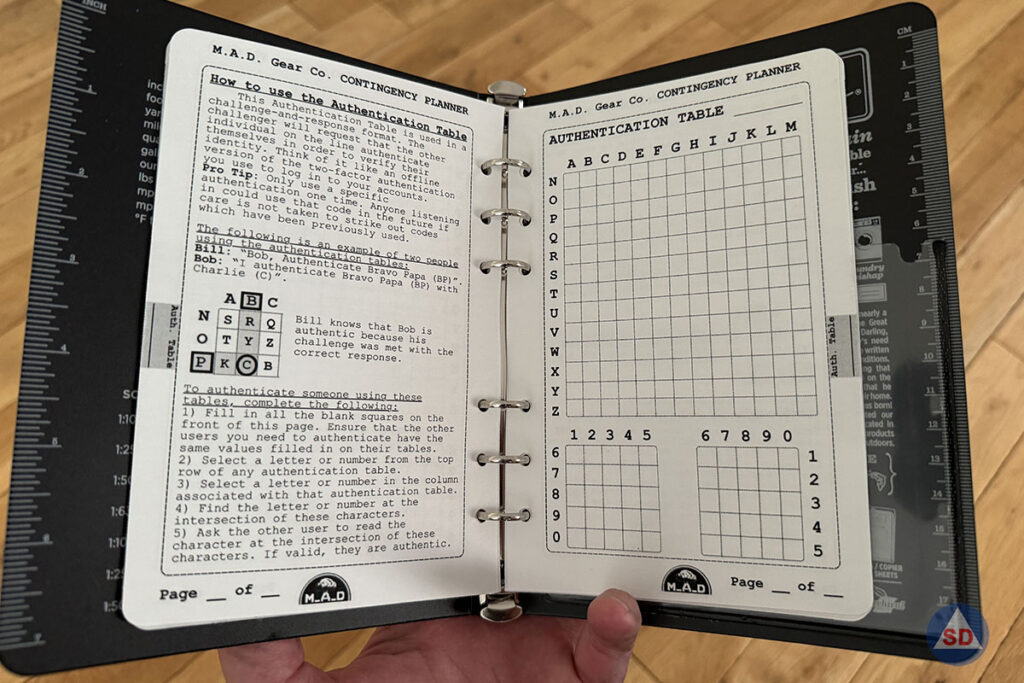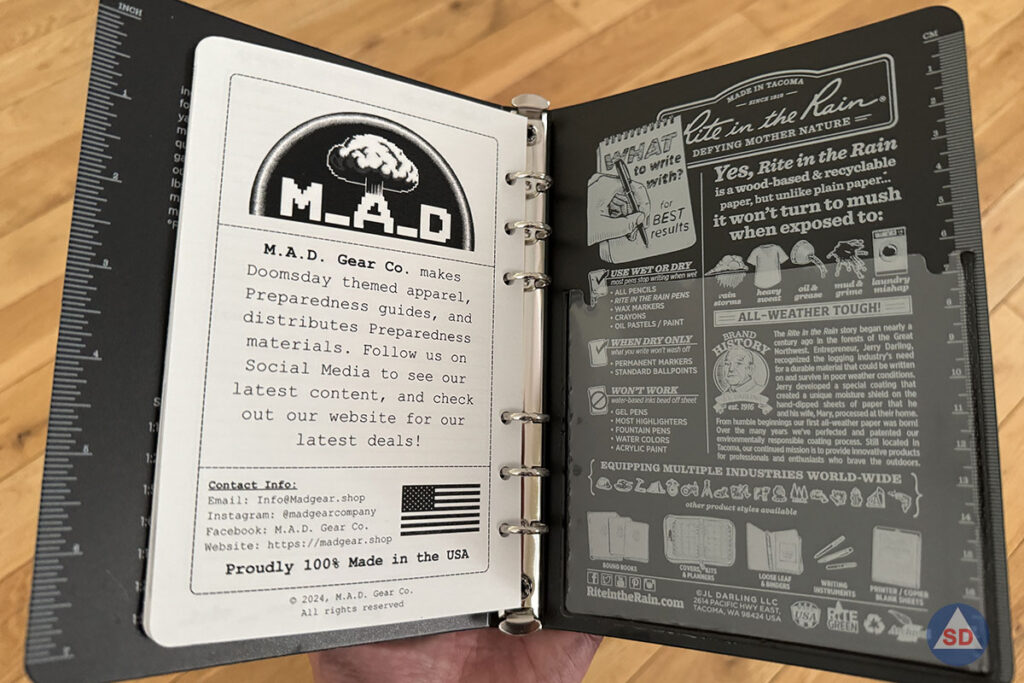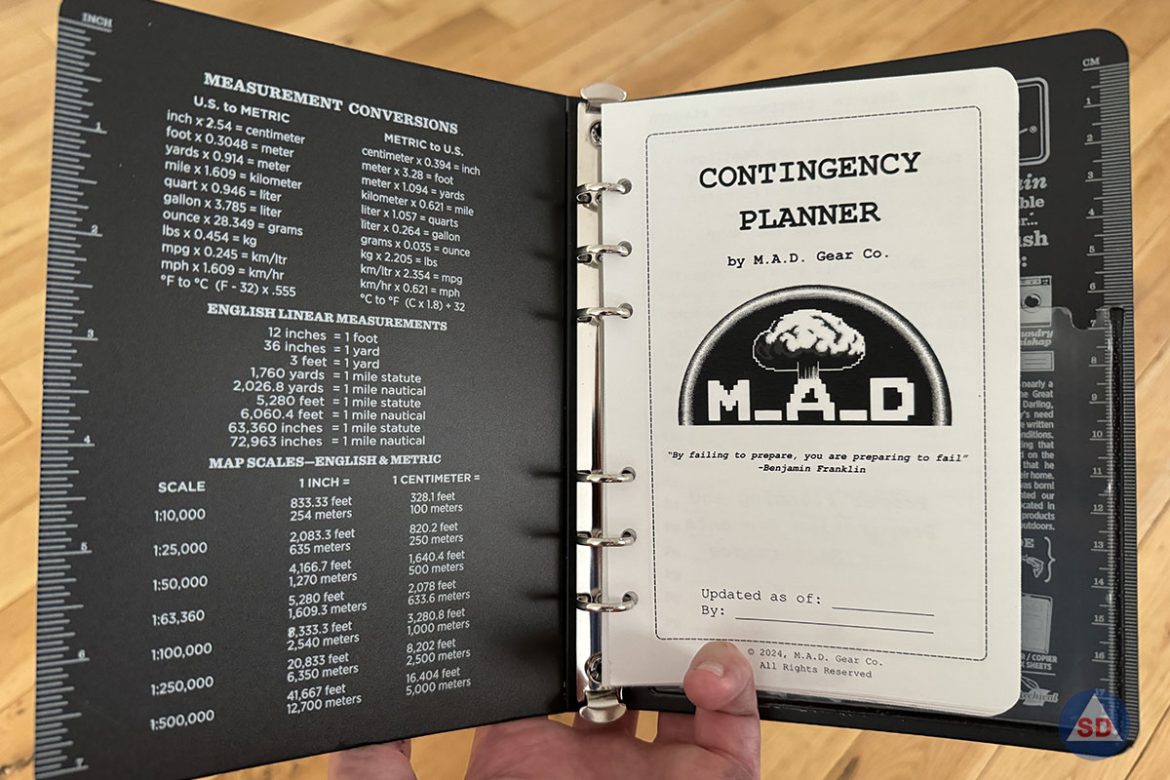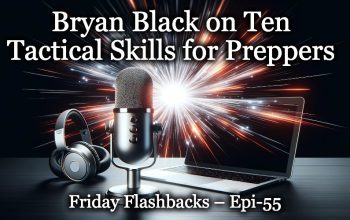3.1K
The world is unpredictable. Having a well-thought-out contingency plan is not just a luxury—it’s a necessity. As preppers, we understand that disasters can strike at any time, whether they are natural, man-made, or a combination of both. The key to survival is preparation, and this begins with a robust contingency plan.
I will cover the importance of planning for contingencies, what elements should be included in such plans, and how the Contingency Planner Standard from Madgear.shop can help you get started on this critical journey.
Why Contingency Planning Matters
Contingency planning is the backbone of any solid preparedness strategy. It involves preparing for various scenarios that could disrupt your daily life, ensuring that you have the resources and strategies to cope with these disruptions. From natural disasters like hurricanes and earthquakes to man-made crises such as economic collapse or civil unrest, having a plan in place can significantly reduce the chaos and stress that typically accompany such events.
A prepper plan is not a contingency plan, but a prepper plan should include a contingency plan.
A contingency plan provides a roadmap for maintaining communication, security, and shelter. By planning ahead, you can mitigate the impact of disasters and ensure a quicker return to normalcy.
Key Elements of a Prepper Plan
Creating a comprehensive contingency plan involves several key elements. Here are the components I think are most important and I will offer some guidance on how to address each one.
- Food and Water Supplies. Food and water are the most critical resources during any crisis. Your plan should include a detailed inventory of non-perishable food items and an adequate supply of clean drinking water. Aim to have at least a three-month supply for each family member. Consider the nutritional needs of your household and include a variety of foods to avoid dietary monotony.
- Shelter. Your plan should consider different scenarios, including staying at home (shelter-in-place) or evacuating to a safer location (bugging out). Each scenario requires a different approach to shelter planning.
- Shelter-in-Place: Ensure your home is equipped to withstand the specific disasters prevalent in your area. This might include reinforcing windows, doors, and roofs against storms, or securing heavy furniture against earthquakes. Stock your home with enough supplies to last through the duration of a typical disaster scenario.
- Bugging Out: Identify potential bug out locations and ensure they are stocked with essential supplies. Your bug out bag (BOB) should contain everything you need to survive for at least 72 hours, including food, water, clothing, and first aid supplies. For more detailed insights, check out my guide on finding a bug out location.
- Medical Supplies. Having a well-stocked first aid kit and any necessary medications is crucial. Your medical kit should include bandages, antiseptics, pain relievers, prescription medications, and any other supplies needed to treat injuries or illnesses. Consider taking a first aid course to better understand how to use these supplies effectively.
- Communication. In a crisis, staying informed and connected with loved ones is vital. Your plan should include multiple ways to communicate, such as:
- Radios: Invest in a good quality NOAA weather radio to receive updates on severe weather and other emergencies. A two-way radio can also be invaluable for keeping in touch with family members.
- Emergency Contact List: Maintain an up-to-date list of emergency contacts, including family, friends, and local emergency services. Make sure everyone in your household knows how to reach these contacts.
- Security. Protecting your home and loved ones is a key part of any contingency plan. This involves both physical security measures and strategic planning.
- Home Security: Install robust locks on doors and windows, use security cameras, and consider alarm systems. During a crisis, reinforce your home’s defenses and stay vigilant against potential threats.
- Self-Defense: Ensure you have the means to defend yourself and your family if necessary. This might include firearms, knives, or other self-defense tools. Training in self-defense techniques can also be beneficial.
- Financial Preparedness. Financial stability is often overlooked in contingency planning. Ensure you have access to cash, as ATMs and banks may not be operational during a crisis. Keep important financial documents in a secure, easily accessible location.
- Food Storage. Focus on foods with long shelf lives such as canned goods, dried beans, rice, pasta, and freeze-dried meals. Don’t forget to include comfort foods and spices to make meals more palatable.
- Water Storage. Store water in food-grade containers and aim for at least one gallon per person per day. Don’t forget to include water purification methods such as filters, tablets, or boiling to ensure a safe supply in case your stored water runs out.
- Contingency Plan. A good prepper plan should include “what if” scenarios. These “what if” scenarios could be anything and there lies the challenge of planning for those; however, there are ways to think about how you can handle the unexpected – safely and discreetly to ensure your survival.
The Contingency Planner is Unique
I have seen different planning tools for preppers developed over the years. The latest to market is the Contingency Planner from Madgear.shop. This product takes a different approach than the products I’ve seen in the past. Rather than just blank sheets for filling in personal information and supplies, it covers the idea of planning itself.

Topics within the planner include:
- How to make a PACE Plan (Primary, Alternate, Contingency, Emergency)
- How to make an EXFIL Plan (exfiltration or extraction)
- Authentication Tables
- Card of the Days
- Cipher Tables
- Notes and References
Those topics make this planner a true contingency planner. I suspect many preppers might look at it as a prepper planner. It’s not that. It is more niche, more specific.
Compact Size – Good and Bad
What I like most about most about the Contingency Planner is its compact size. It is easy to store, carry with you, etc. Unfortunately, that is also what I like least about it. The planner is big enough to cover the basics but too small to go into great detail on the different aspects of contingency planning. I would need to order more paper for that purpose.

Still, the Contingency Planner is can help ensure you are ready to face any crisis. It makes you consider aspects of readiness that you may not have otherwise considered. Bonus – it’s Made in the USA!



